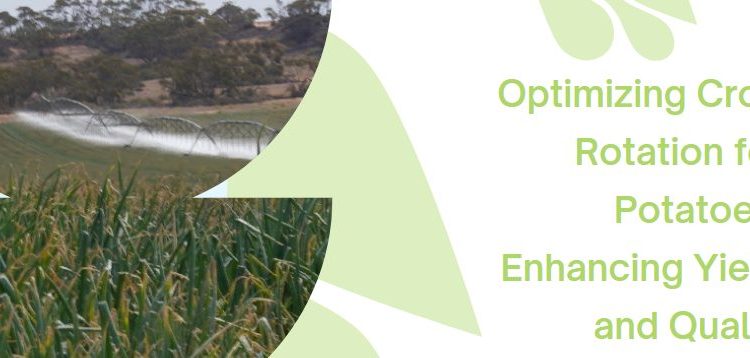#CropRotation #PotatoYield #PotatoQuality #SoilborneDiseases #CoverCrops #GreenManureCr
When planning crop rotations, it is crucial to consider the impact of other crops on potato yield and quality. Certain rotation crops can affect the levels of specific soilborne diseases, either increasing or decreasing the inoculum. Given that potatoes are often the most profitable crop in the rotation sequence, it is important to select rotation crops carefully to optimize overall productivity.
It is essential to choose crops that do not contribute to the increase of soilborne diseases known to impact potato productivity and quality. Some crops can serve as hosts for diseases without showing visible symptoms. Therefore, thoroughly investigating the disease potential of rotation crops is necessary before including them in the sequence alongside potatoes. Keep in mind that disease risks may vary significantly between locations, so consulting with an agronomist and considering local growing conditions is advised.
Desirable Characteristics of Rotation Crops:
To enhance the success of crop rotation, certain desirable characteristics should be considered when selecting rotation crops. These characteristics include:
Return organic materials to the soil: Rotation crops that enrich the soil with organic matter can improve soil fertility and structure, benefiting subsequent potato crops.
Non-hosts of pests, nematodes, and soilborne diseases: Choosing rotation crops that do not harbor pests and diseases of concern for potatoes helps reduce the risk of contamination.
Weed suppression and control facilitation: Some rotation crops possess weed-suppressing properties or support effective weed control, reducing competition for resources and optimizing potato growth.
Control of volunteer potatoes: Rotation crops that effectively suppress the growth of volunteer potatoes (potato plants that emerge from leftover tubers) help minimize the risk of potato pests and diseases.
Soil stabilization: Certain rotation crops contribute to stabilizing the soil, preventing wind and water erosion, which can improve growing conditions for potatoes.
Cover and Green Manure Crops: Soil Health Enhancement
Planting specific cover and green manure crops before potatoes can have a positive impact on soil health. These crops provide several benefits, including:
- Returning organic materials to the soil, thus enriching its nutrient content and improving fertility.
- Acting as non-hosts for pests, nematodes, and soilborne diseases that may pose risks to potatoes.
- Suppressing weeds, reducing weed competition, and facilitating weed control.
- Biofumigation, a process in which certain cover crops release compounds that minimize and manage the impact of soilborne diseases.
- Supporting control of volunteer potatoes, preventing their growth and reducing the risk of pest and disease transmission.
- Stabilizing soil against wind and water erosion, maintaining soil structure and preventing nutrient loss.
- Minimizing crop residue problems, ensuring smooth transitions between rotation crops.
Past Herbicide Applications: Managing Risks for Potatoes
Potatoes are highly sensitive to residues from certain herbicides present in the soil. To safeguard potato crops, it is crucial to be aware of the herbicide application history of the paddock for the past two years. The following types of herbicides pose a risk to potatoes:
- Synthetic auxin-type growth regulators
- Acetolactate synthase (ALS) and acetohydroxyacid synthase (AHAS) enzyme inhibitors
- Triazine photosynthesis inhibitors
Reviewing the plant-back requirements of the herbicides used in previous years helps prevent chemical damage to the potato crop. Proper planning of cropping rotations and chemical use several years ahead of each potato rotation minimizes the risk of adverse effects.
Source: Australian Potato Growing Guide








